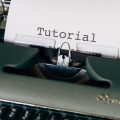barber hairstyle guide
Your haircut is more than just a style—it’s a statement․ This guide offers essential tips, popular trends, and expert advice to help you find the perfect look․
1․1 Importance of a Haircut in Men’s Grooming
A well-crafted haircut is a cornerstone of men’s grooming, enhancing confidence and overall appearance․ It shapes first impressions, reflects personal style, and complements face shape and hair texture․ A good haircut boosts self-assurance, making it a vital aspect of daily grooming․ Regular trims maintain neatness, prevent damage, and keep hair healthy․ Whether for professionalism or casual looks, a precise cut ensures a polished, put-together image․ Understanding its impact helps men make informed choices, aligning their haircut with their lifestyle and preferences for a sharp, modern look․
1․2 Purpose of the Guide
This guide serves as a comprehensive resource for men seeking to enhance their style through expert haircut advice․ It covers essential topics like face shape analysis, hair texture, and communication with barbers․ The guide also explores popular hairstyles, maintenance tips, and celebrity inspirations, ensuring readers can make informed decisions․ Whether you’re aiming for a classic look or a modern trend, this guide provides step-by-step insights and practical tips to help you achieve your desired hairstyle with confidence and ease, making it an indispensable tool for grooming success․
Understanding Your Face Shape and Hair Type
Understanding your face shape and hair type is crucial for choosing the right hairstyle․ Oval faces suit most cuts, while round faces benefit from volume on top․ Square faces look sharp with textured styles․ Knowing your hair texture—thick, thin, curly, or straight—helps tailor the perfect look․
2․1 Determining Your Face Shape
Identifying your face shape is key to finding the perfect hairstyle․ Oval faces are versatile and suit most cuts, while round faces benefit from styles that add volume on top․ Square faces look sharp with textured, angular styles, and triangular faces balance well with more volume on top․ To determine your face shape, measure your forehead, cheekbones, jawline, and face length․ Oval faces are longest from forehead to chin, while round faces are similar in length and width․ Square faces have strong, equal proportions, and triangular faces taper from temples to chin․ Knowing your face shape helps tailor your haircut for a flattering, balanced look․

2․2 Understanding Hair Texture and Length
Hair texture and length play a crucial role in determining the right hairstyle․ Hair texture ranges from straight, wavy, curly, to coily, each requiring specific styling techniques․ Straight hair can be styled sleek or voluminous, while curly hair needs moisture and definition․ Length also matters—short hair is low-maintenance, while longer hair offers versatility․ Consider your lifestyle and face shape when choosing a length․ For example, shorter styles suit busy schedules, while longer hair works for those willing to invest time in styling․ Balancing texture and length ensures a flattering, manageable look tailored to your preferences and lifestyle․
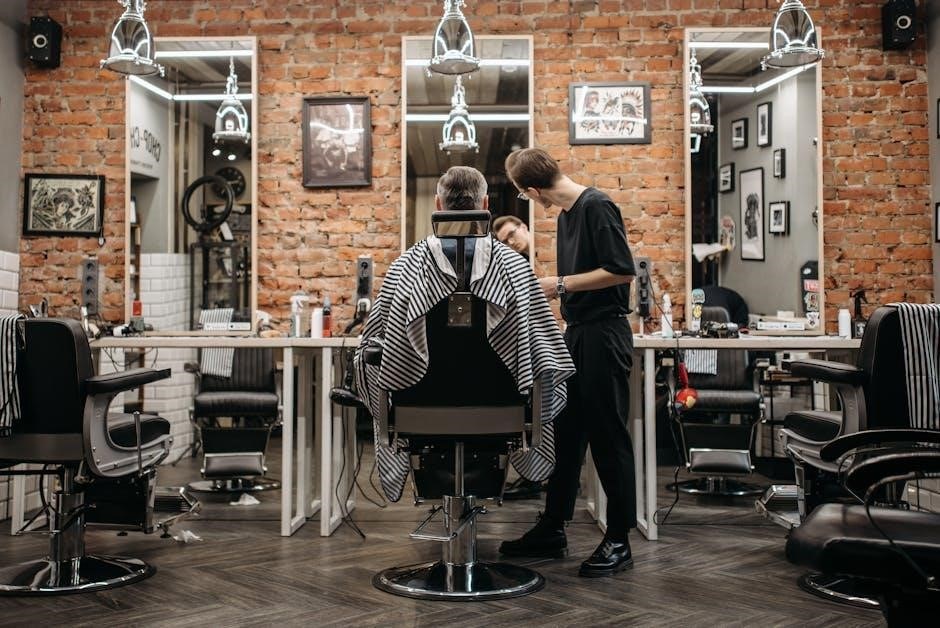
Communicating with Your Barber
Clear communication is key to achieving your desired haircut․ Use reference photos, describe your style, and discuss your face shape and hair type to ensure a perfect result․
3․1 How to Describe Your Desired Hairstyle
Clearly describing your desired hairstyle ensures your barber understands your vision․ Start by bringing reference photos to illustrate your preferences․ Explain the length you want on top, sides, and back, and mention any specific styling details, like a fade or undercut․ Discuss your face shape and hair type to ensure the style complements you․ Be open to your barber’s expertise—they can refine your ideas based on their experience․ Effective communication helps create a look that aligns with your expectations and enhances your personal style․
3․2 The Importance of Bringing Reference Photos
Reference photos are crucial for ensuring your barber fully understands your vision․ They provide a visual guide, helping to clarify your desired style, length, and details․ Having 2-3 images allows your barber to explain how the look will work for you and suggest necessary adjustments․ This visual aid enhances communication, reducing misunderstandings and ensuring a more accurate result․ It also gives your barber inspiration to adapt the style to your face shape and hair type․ Don’t hesitate to use online resources like haircutinspirations․com for ideas—clear examples lead to a better final look․
3․3 Understanding Barber Terminology
Understanding barber terminology is key to effective communication․ Terms like “fade,” “undercut,” and “buzz cut” describe specific techniques․ A “fade” graduates hair length, while an “undercut” involves cutting the sides and back short․ Knowing terms like “scissor cut” or “taper” helps clarify your preferences․ Familiarizing yourself with these terms ensures your barber understands your vision; For example, asking for a “high fade” or “skin fade” specifies where the fade begins․ Clear communication leads to a more accurate and satisfying result, making it essential to learn and use the right language when describing your desired hairstyle․
Popular Barber Hairstyles
From fades and undercuts to pompadours, crew cuts, and Caesar styles, these timeless barber hairstyles offer versatility for every face shape and hair type, ensuring a sharp, modern look․
4․1 Fade Haircuts: Types and Styles
Fade haircuts are a versatile and popular choice, offering a seamless transition from short to longer hair․ They can be styled in various ways, including high, medium, and low fades, each creating a distinct look․ A high fade starts closer to the top, while a low fade begins near the neckline․ Skin fades provide a clean, modern aesthetic, blending hair into the skin for a sharp contrast․ Pair fades with styles like pompadours or undercuts for added flair․ This technique works for most face shapes and hair types, making it a timeless and adaptable option for men seeking a polished appearance․
4․2 Undercuts: Modern and Classic Variations
The undercut is a bold, versatile hairstyle featuring short, faded sides with a disconnected, longer top․ Classic undercuts emphasize contrast, while modern variations blend seamlessly with fades or textures․ Popularized by celebrities like Brad Pitt and Christian Pulisic, this style offers flexibility․ For a sleek look, pair with a slicked-back top, or opt for a messy, undone texture for a casual vibe․ Undercuts suit most face shapes and hair types, making them a timeless choice for men seeking a sharp, modern aesthetic with endless styling possibilities․
4․3 Pompadours: From Classic to Modern

The pompadour is a timeless hairstyle characterized by voluminous hair on top, often styled upwards, with shorter sides․ Classic versions feature a clean, defined look, while modern interpretations incorporate fades or textures․ Achieved with a combination of fades and scissor cuts, the pompadour is versatile, suiting various face shapes and hair types․ Celebrities like David Beckham and Bruno Mars have popularized this style, showcasing its adaptability․ To maintain the look, regular trims and styling products are essential․ Whether sleek or messy, the pompadour remains a standout choice for men seeking a confident, eye-catching appearance with both classic and contemporary flair․
4․4 Crew Cuts: Evolution and Variations
The crew cut, a classic American style, has evolved over time while retaining its core characteristics․ Traditionally, it features shorter hair on the sides and back, with a slightly longer top․ Modern variations include subtle fades or scissor cuts, offering a more tailored look․ For example, Ryan Gosling’s version combines an 8 on the sides with a short, scissor-cut top․ The crew cut is versatile, suitable for most face shapes, and can be styled neatly or with a bit of texture․ To achieve this look, ask for shorter sides with a scissor or fade technique and a trimmed top for a clean finish․
4․5 Caesar Cuts: Features and Styling
The Caesar cut is a timeless choice, characterized by a distinctive horizontal fringe across the hairline․ It suits men with strong facial features and works well for those open to a bit of edge․ The sides are typically kept short but not faded, distinguishing it from a French crop․ To style, keep the fringe neat and the top textured․ Christian Pulisic often wears this cut, showcasing its versatility․ For a polished look, opt for a 5 all over with Caesar-style bangs․ This cut is ideal for those seeking simplicity and a touch of classic sophistication in their grooming routine․
4․6 Quiffs: Versatility and Styling Tips
The quiff is a classic yet versatile haircut, perfect for those seeking a stylish, adaptable look․ It features a close shave on the sides (typically 1-3 guard size) and longer hair on top, usually around 3 inches․ The key to pulling off a quiff is in the styling—use a generous amount of pomade or matte paste to sweep the hair forward and slightly to the side․ For added texture, consider a scissor cut on top․ This cut works well for most face shapes and hair types, making it a timeless choice for both casual and formal occasions․ Ryan Gosling and David Beckham are iconic examples of this look done right․
4․7 Side Part Haircuts: Elegance and Versatility
The side part haircut exudes timeless elegance and versatility, making it a favorite for many․ It features a distinct part in the hair, with varying lengths on the top and sides․ A scissor taper cut can achieve a polished look without exposing skin, while styling involves combing or brushing the hair in either direction at the part․ This cut suits most face shapes and hair types, offering both classic and modern appeal․ Celebrities like Steven Yeun and Jason Sudeikis showcase its adaptability, proving it’s perfect for formal events or everyday wear with minimal styling effort required․
4․8 Slicked Back Haircuts: Style and Maintenance
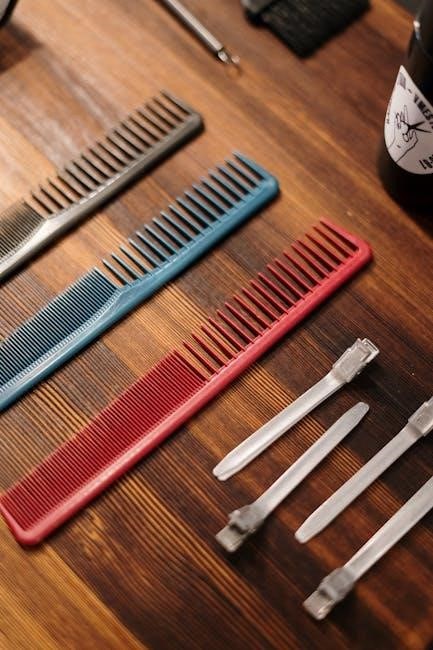
The slicked back haircut is a sleek, sophisticated style that exudes confidence․ It involves brushing the hair backward, creating a polished look that works for both casual and formal occasions․ Regular maintenance is key, as consistent styling with product helps train the hair to stay in place․ Avoid overusing product to prevent a shiny, outdated appearance․ This style is versatile, suiting most face shapes and hair types․ Celebrities like David Beckham and Tom Holland showcase its adaptability, proving it’s a timeless choice for those seeking elegance with minimal effort․ Proper care ensures it remains sharp and modern․
4․9 Comb Over Haircuts: Classic and Modern Takes
The comb over haircut is a timeless style that combines simplicity with versatility․ It involves cutting the sides short while keeping the top longer, then combing the hair to one side․ This look is ideal for men with receding hairlines or those seeking a polished appearance․ Modern variations include fades or undercuts on the sides for a more contemporary feel․ Celebrities like Kingsley Ben-Adir and David Beckham have popularized this style, showcasing its adaptability for both formal and casual settings․ Regular trims and styling products are essential to maintain its neat, put-together look, making it a favorite for many․
4․10 Natural and Braided Hairstyles
Natural and braided hairstyles offer a unique blend of simplicity and cultural flair․ Natural styles often begin with a buzz cut, allowing hair to grow out evenly for a clean, low-maintenance look․ Braids, on the other hand, are perfect for managing longer hair, with options like cornrows or afro braids․ These styles require a skilled barber or stylist, especially for intricate designs․ Celebrities like Jordan Clarkson and Aaron Gordon showcase how these looks can be both stylish and meaningful․ Whether you prefer a subtle natural cut or bold braids, these hairstyles celebrate individuality and heritage, making them a standout choice for many men․
4․11 Bob Hairstyles: A Modern Twist
The bob hairstyle has evolved into a modern, versatile option for men․ Typically featuring a near-center part with hair flowing past the ears, it offers a sleek, balanced look․ To achieve this style, hair is usually cut to a similar length all around, with the front slightly longer․ Celebrities like Timothée Chalamet have popularized this cut, often wearing it tucked behind the ears or pulled forward for a edgy vibe․ A razor cut adds texture, while maintaining a longer front creates a dynamic silhouette․ This style works best with ample hair and is perfect for those seeking a contemporary, low-maintenance look․
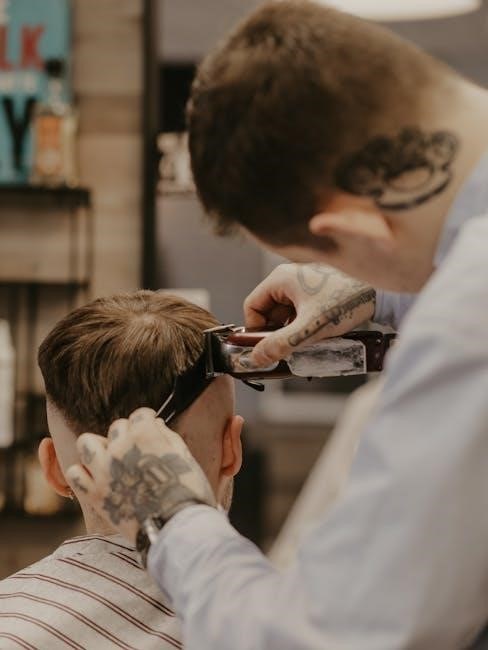
Maintenance and Styling Tips
Maintaining your hairstyle requires the right tools, products, and regular trims․ Invest in quality grooming essentials and learn styling techniques to keep your look sharp and polished․
5․1 Essential Tools for Haircut Maintenance
Maintaining your hairstyle at home requires the right tools․ A good pair of hair clippers is essential for trimming and fading․ Invest in a quality trimmer for clean lines and edges․ Scissors are ideal for precision cuts, while a comb helps section and guide your hair․ A brush ensures even distribution of products․ Regular use of pomades or styling creams keeps your look polished․ Proper tools not only extend your haircut’s life but also enhance its appearance․ Always choose tools that suit your hair type and style for the best results;
5․2 Haircare Products for Different Hairstyles
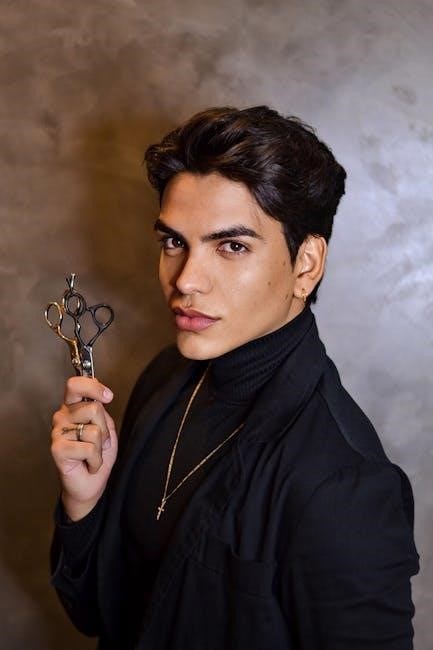
Choosing the right products is key to maintaining your hairstyle․ For fades and undercuts, use a matte paste or light hold pomade to keep it sleek․ Pompadours require a strong hold pomade or styling wax for definition․ Natural styles benefit from leave-in conditioners or curl activators to enhance texture․ For slicked-back looks, opt for a water-based pomade or styling gel․ Styling creams are versatile for most styles, while light hold mousses add volume without stiffness․ Always select products suited to your hair type and desired finish to keep your style fresh and polished․
5․3 Regular Trims: Importance and Frequency
Regular trims are essential for maintaining a polished look and preventing split ends․ For high-maintenance styles like fades or undercuts, visit your barber every 2-3 weeks to keep the edges sharp․ Classic cuts like crew cuts or side parts can go 4-6 weeks between trims․ Longer styles or pompadours may need touch-ups every 6-8 weeks to maintain shape․ Consistency ensures your hairstyle stays neat and aligns with your personal grooming goals․ Adjust frequency based on hair growth and style requirements to keep your look fresh and well-defined․
The Barbershop Experience
A barbershop offers more than a haircut; it’s a space for style, relaxation, and camaraderie․ Expect skilled professionals, personalized advice, and a welcoming atmosphere tailored to your grooming needs․
6․1 What to Expect at a Barbershop
Visiting a barbershop is a unique experience that combines tradition with modern grooming․ Upon arrival, expect a warm welcome and a consultation to discuss your desired style․ Skilled barbers will assess your face shape, hair type, and personal preferences to recommend the best cut․ The service often includes precision cutting, shaving, or trimming, followed by styling tips․ Many barbershops offer additional amenities like hot towels, beard care, and refreshing beverages․ The goal is to ensure you leave feeling confident and well-groomed, with a look tailored to your individual style and needs․
6․2 Benefits of Choosing a Professional Barber
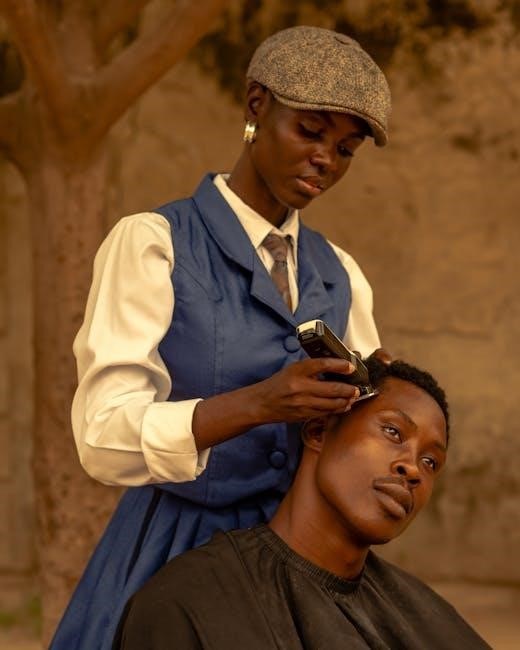
Choosing a professional barber offers unparalleled expertise and personalized service․ Barbers are trained to understand face shapes, hair textures, and current trends, ensuring a tailored look that enhances your features․ They use high-quality tools and techniques to deliver precise cuts, fades, and styles․ Professional barbers also provide valuable advice on maintenance and products, helping you maintain your look at home․ The experience often includes a welcoming environment, making it more than just a haircut—it’s a chance to relax and leave feeling confident and polished․ Their skill and attention to detail ensure a superior outcome compared to DIY or less experienced stylists․
6․3 How to Choose the Right Barbershop
Choosing the right barbershop involves research and consideration of key factors․ Start by reading online reviews and asking for recommendations to gauge a shop’s reputation․ Check their portfolio to ensure their style aligns with your preferences․ Look for barbershops that offer services tailored to your needs, such as fades, undercuts, or beard styling․ Consider the atmosphere—whether it’s traditional and cozy or modern and sleek․ Ensure the barbers are experienced and skilled in handling your hair type and face shape․ A good barbershop will prioritize your comfort and deliver a personalized experience, making it worth your time and investment․
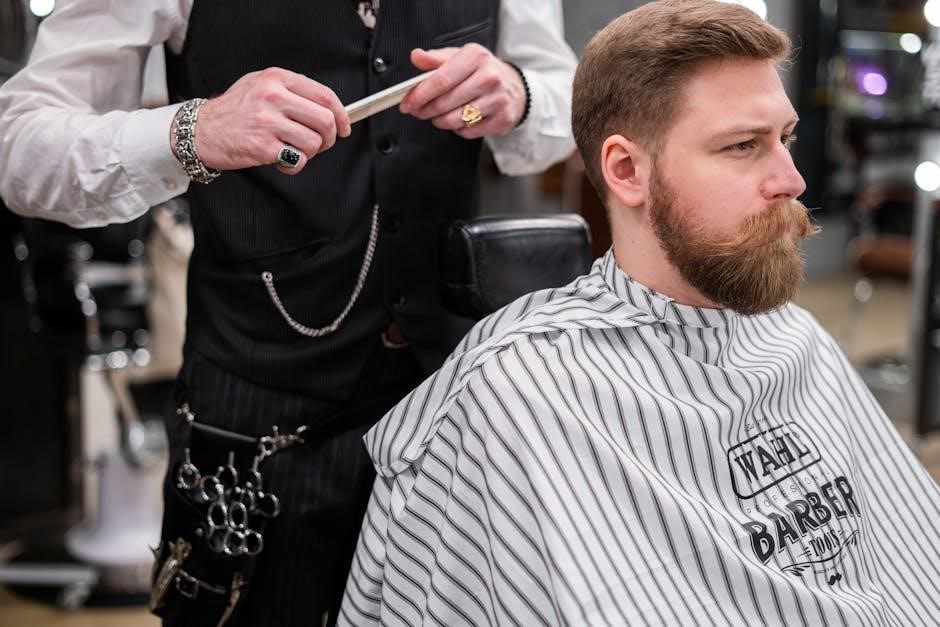
Celebrity Inspirations
Celebrities often set the trends for men’s hairstyles․ Icons like Mookie Betts, Father John Misty, and Michael B․ Jordan showcase versatile looks, from buzz cuts to undercuts, inspiring modern styles․
- Mookie Betts: Sleek, skin-fade designs․
- Father John Misty: Contrasting buzz cuts with beards․
- Michael B․ Jordan: Sharp, modern undercuts․
7․1 Iconic Hairstyles from Famous Personalities
Famous personalities have long influenced men’s hairstyles, creating iconic looks that inspire․ Mookie Betts popularized the sleek buzz cut, while Father John Misty showcased contrasting styles with a buzz cut and beard․ Michael B․ Jordan’s sharp undercuts and Christian Pulisic’s Caesar cuts highlight versatility․ Tom Holland’s side part and Ryan Gosling’s modern crew cut demonstrate timeless elegance․ These celebrities prove how the right haircut can elevate a man’s image, blending personality with practicality․ Their styles, from fades to undercuts, continue to shape barbering trends, offering men a roadmap to finding their perfect look․
7․2 How to Adapt Celebrity Styles to Your Look
Adapting celebrity hairstyles to your look involves understanding your face shape, hair type, and personal style․ For instance, while Mookie Betts’ buzz cut suits most face shapes, it’s especially flattering for oval faces․ Father John Misty’s contrasting buzz cut and beard works well for those with strong facial features․ Michael B․ Jordan’s undercut can be tailored to add texture or volume based on hair type․ Christian Pulisic’s Caesar cut is ideal for those with straight hair and a defined jawline․ The key is to identify elements of the style that complement your features and communicate effectively with your barber to achieve a personalized look․
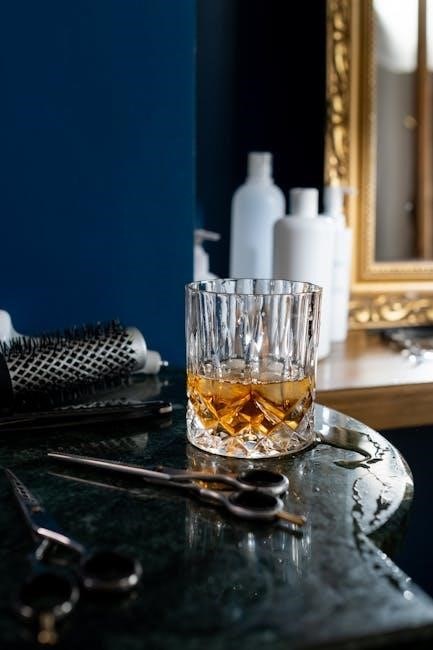
Step-by-Step Guides
Master popular styles with detailed tutorials․ Learn to achieve the perfect fade, craft a sleek undercut, and more with expert techniques for professional-looking results at home․
8․1 How to Achieve the Perfect Fade
Achieving a perfect fade requires precision and the right tools․ Start by sectioning your hair, using clips to separate the top from the sides․ Use clippers with guard sizes to create a gradual transition․ For a natural look, blend the fade by feathering the edges․ Maintain the defined line by trimming regularly․ Practice makes perfect, so don’t be discouraged if it takes time to master․ Watch tutorials or consult a professional for personalized guidance to ensure your fade looks sharp and polished every time․
8․2 Mastering the Undercut at Home
Mastery of the undercut at home begins with the right tools: clippers and a comb․ Start by buzzing the sides and back to your desired length, using a guard attachment for consistency․ Next, blend the edges where the undercut meets the top layer for a seamless transition․ Use scissors or thinning shears to style the top, ensuring it contrasts with the shorter sides․ Regular trims will keep the look sharp․ For a polished finish, tidy up the neckline and ears with a trimmer․ Practice patience and take it slow to achieve a professional-quality undercut without visiting a barber․
Current Trends in Men’s Hairstyles
Modern men’s hairstyles blend classic cuts with fresh twists, emphasizing fades, undercuts, and textured tops․ Seasonal trends and cultural influences shape these evolving styles, offering versatility for every face shape and hair type․
9․1 Seasonal Hairstyle Trends
Seasonal trends influence men’s hairstyles, with lighter, shorter cuts like fades and undercuts gaining popularity in summer for a fresh, breathable look․ In winter, thicker, textured styles with volume on top are favored for warmth and sophistication․ Spring often sees a rise in sleek, side-parted haircuts, while autumn brings back classic pompadours and quiffs for a rugged charm․ These trends emphasize versatility, allowing men to adapt their looks to the season while maintaining personal style․ Understanding your face shape and hair type is key to pulling off these seasonal styles with confidence and flair․
9․2 Cultural Influences on Barber Hairstyles
Cultural influences significantly shape barber hairstyles, reflecting global diversity and personal expression․ African braids and fades celebrate heritage, while European styles like pompadours blend tradition with modern flair․ Asian-inspired undercuts emphasize sleek minimalism, and Latin styles often feature bold, textured looks․ Celebrities and cultural icons further popularize these trends, making them mainstream․ Barbers adapt techniques to honor cultural roots while catering to contemporary tastes, ensuring hairstyles remain both authentic and innovative․ This cultural exchange enriches the world of barbering, offering men a wide range of options to express their identity and connect with their heritage through their haircut․
With the right knowledge and confidence, finding your ideal hairstyle is achievable․ Experiment, embrace trends, and personalize your look to reflect your unique style and identity․
10․1 Final Tips for Choosing the Right Hairstyle
When selecting a hairstyle, consider your face shape, hair texture, and personal style․ Reference photos can help communicate your vision to your barber․ Be open to their expertise and advice, as they can suggest tweaks to suit your features․ Maintenance is key—choose a style that fits your lifestyle․ Experiment with products and tools to enhance your look․ Confidence is the ultimate accessory, so own your style! Remember, a great haircut is a balance of aesthetics and practicality․ Take your time, and don’t hesitate to try something new—you might discover a look that defines you․
10․2 Encouragement to Experiment and Explore
Embrace change and explore different hairstyles to discover what truly defines you․ Your hair is a canvas for self-expression, and experimenting with new looks can boost confidence and refresh your image․ Don’t fear mistakes—they’re part of the journey․ Consider your face shape, hair type, and lifestyle when trying new styles, and don’t hesitate to seek your barber’s input․ Reference photos and celebrity inspirations can spark ideas, but remember, your look should be uniquely yours․ Whether it’s a bold fade or a sleek pompadour, own your style and have fun with the process of finding what makes you stand out․

